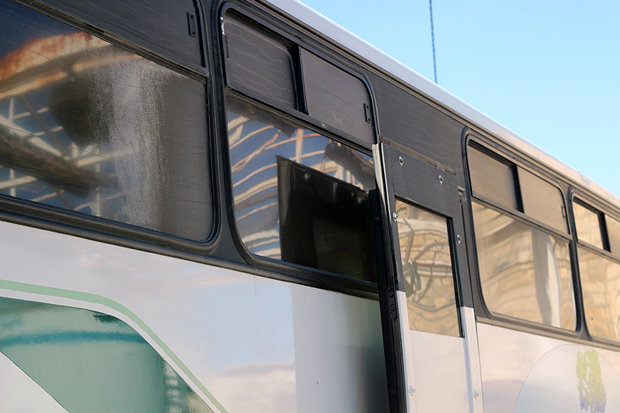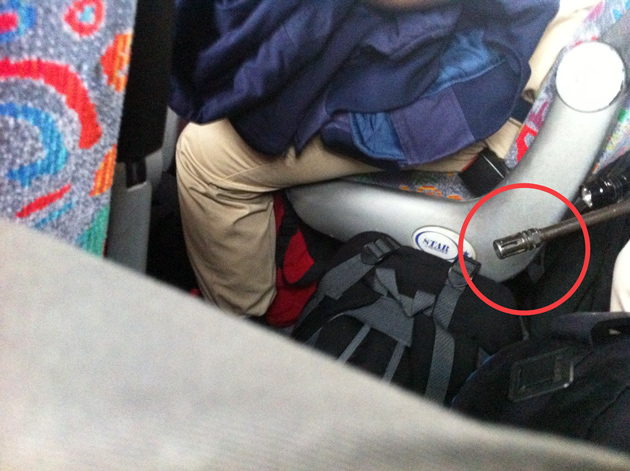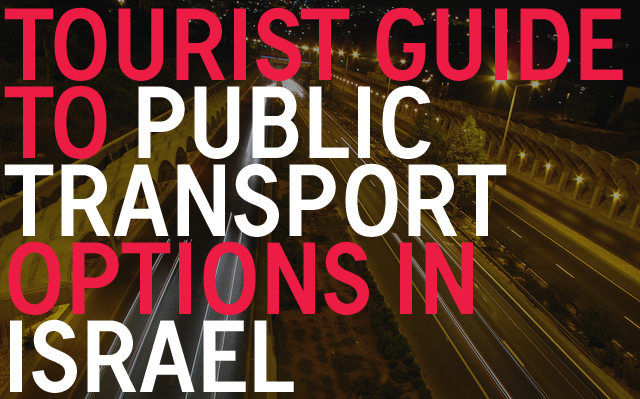This little Middle Eastern country is just a tiny dot on the map of the world, but once inside it’s confusing borders, Israel offers an incredible amount of diverse things to do, unique scenery and incredible activities. Getting from place to place or city to city, however, can sometimes be a challenge. Israel’s public transportation isn’t the most intuitive. This is the Middle East, after all, so things run on their own time.
Taking Buses Between Israeli Cities
While many tourists opt to visit the bigger cities of Israel, there are plenty of other tourist attractions scattered throughout the countryside. Some places can be more difficult than others to reach by public transportation, so really sometimes a rental car is necessary. But other times you’ll find the intercity buses quite convenient options. Buses in Israel are often the cheapest option and you’ll most likely see them crowded with young Israelis going to and from their homes and their military bases.
With Tel Aviv and Jerusalem just 65 km apart, buses are fast and depart regularly (every 15 minutes). They often fill-up past capacity with people sitting and standing on bags piled up in the aisle. Sometimes these buses even have wifi. (And sometimes that wifi even works!)
One thing that stands apart about the buses in Israel is the incredible amount of soldiers that you’ll find on the public transport. And all of them with large, scary and intimidating guns. It can be incredibly disconcerting at first, and it’s a difficult thing to get used to if you ask me.
Travel by Train in Israel
The other public transport option for traveling between Israeli cities is by train. The trains in Israel provide a few useful and fast connections — notably between Ben Gurion Airport and central Tel Aviv. But just like the public buses, the Israeli trains don’t run on Shabbat (meaning if you arrive by plane on a Friday evening, you’re only option is a taxi or shared shuttle bus).
Popular among the train routes are the following cities: Haifa, Tel Aviv, Be’er Sheva and Jerusalem. From Be’er Sheva you can get pretty close to the Negev Desert by hopping on a bus to cities such as Mitzpe Ramon.
Taking Sheruts (Shared Vans)
My preferred method of getting around Israel (and Palestine, for that matter) are the sheruts. They run 24-7 all over the country and will pick up and drop off passengers anywhere along their typical routes. Often just a few shekels more than the public buses, they’re faster and more comfortable.
In Tel Aviv where the public transportation city buses are privatized and owned by a confusing amount of companies, sometimes the city sheruts are the easiest option for getting around the city (that is if you’re not on a bike). It can be intimidating at first because though the sheruts are numbered and have routes, they don’t have set stopping points or schedules. They come when they come and because they can only fit up to 12 or so passengers, if they’re full, they’re full. To take a sherut in Tel Aviv, you have to do the following:
- Wait along the street where you know the sherut you need will drive by
- Flag it down. It’ll stop for you if you have room. If there’s a group of people, they might hold up a finger signalling how many empty seats are available (and you can do likewise for how many seats you need).
- If there’s room for you, get in the bus and sit in the first available seat.
- Once seated, pass up your money. If you’re in the back of the bus, you simply hand it to the passenger in front of you and it’ll make its way to the driver. As of June 2013, public buses cost 6.70 NIS and the sherut costs between 6-8 NIS depending upon destination.
Like mentioned above, the public sheruts follow similar routes to the other bus companies. The most common sherut lines in Tel Aviv are the #4 and #5.
- The #4 runs from Tel Aviv Central Bus Station through Allenby and Ben Yehuda Streets
- The #5 runs from Tel Aviv Central Bus Station through Rothschild Blvd., Dizengoff Center and Dizengoff Street
For more information about public transportation in Tel Aviv, check the official municipality website.
How to Travel During Shabbat in Israel
It’s actually quite easy to travel in Israel during Shabbat despite all public buses & trains closing down for the holy day. You can catch shared taxis which operate between major cities every day, but most importantly during Shabbat. In Tel Aviv, the sheruts depart and arrive from the New Central Bus Station. In Jerusalem the sheruts depart and arrive at Zion Square (in a side alley across the street from the Ben Yehuda pedestrian street). *Note: During the week, sheruts also arrive and depart from in front of the Central Jerusalem Bus Station.
You might think it’s suspicious to just hand over your money to a man on the side of the street persistently asking passersby “Jerusalem?” or “Tel Aviv?” but don’t worry! It’s the easy and cheapest way to travel between cities during Shabbat. The prices are set, so you needn’t worry about being ripped off. Yes it’s more than the public buses but during Shabbat you really have no choice. The sherut buses only leave when they’re full, so depending upon the time you’re leaving, you may have to wait around for the sherut to fill up. Personally I don’t think I’ve ever waited more than 5 minutes for one to fill up.
Other Ways to Get Around Israel
Knowing that getting to more unusual destinations in Israel can be a challenge for backpackers and solo travelers, Abraham Tours has recently launched a hop-on-hop-off bus that goes around Israel. Starting in Jerusalem, the bus stops in smaller cities (but those still worthy of a visit). Notable stops on the Abraham Tours bus route include:
- Caeserea – ancient Roman ruins on the beach. I visited by car when I was there, but it might also be possible by bus or hitch-hiking from Tel Aviv
- Acre — ancient coastal city just north of Haifa, it’s usually accessible by bus and great for a day trip or stopover on any travel route through Israel’s north
- Beit She’an (or the Jordan River Crossing) — Only real reason to get here is to cross the border into northern Jordan (also possible via public bus from Jerusalem)
- Safed — Jewish holy city famous for Kabbalah. I found the city pretty boring, actually, but many tourists like it for it’s mysticism, religiosity and general quaintness
- Tiberias — on the Sea of Galilee for those wishing to visit the many Christian holy sites nearby
- Nazareth — a true gem of a city in northern Israel. View my posts about Nazareth here.
The Abraham Bus costs upwards of 64€. Learn more at abrahamtours.com/bus





Thanks for this blog entry, super helpful!!
Glad you found it helpful Brittney. That’s the end goal :)
My friend went on a birthright trip there a couple of years ago. And I’ve been wanting to go ever since! She had so much fun and learned so much about Israel. I think this article may help when I finally get to go on a birthright trip (oh wait. I don’t have that. Whatever, still going to go).
Haha, well I hope you do make it to Israel eventually. Those Birthright trips can be rather constricting and they keep the people on the tours pretty sheltered, so if you do go, I definitely suggest stretching your legs and enjoying the many other things to do and sights to see across Israel (and Palestine!). Public transport is definitely the cheapest and relatively easiest way to get around as well.
[…] Slicha Lest you forget you’re in the Middle East, learn slicha early in your trip. It’s Hebrew for excuse me or sorry! You’ll use it when cutting in front of people in queues, when brushing past them on the crowded Tel Aviv boulevards, and when climbing over other passengers in the Israel public transport. […]
[…] Slicha Lest you forget you’re in the Middle East, learn slicha early in your trip. It’s Hebrew for excuse me or sorry! You’ll use it when cutting in front of people in queues, when brushing past them on the crowded Tel Aviv boulevards, and when climbing over other passengers in the Israel public transport. […]
Excellent tips, seems it’s pretty easy to get around… We hired a car & fuel is crazy!
Oh yes – I hired a car once before and though the rental was pretty cheap, the fuel definitely was not!
I’m an Israeli and when I was younger some guy from Denmark told me the big amount of guns give him an Uncomfortable feeling, and here I see it again.
only when I been in India and sew all the police forces in Varanasi during a holiday I understood it. it looks so natural to me (and I was one of the gun holders myself. it’s something Israelis never notice
which is easier to go from Tel Aviv to Beit Shemesh, super bus or train
also
is there a bus from beit shemesh to ben gurion airport